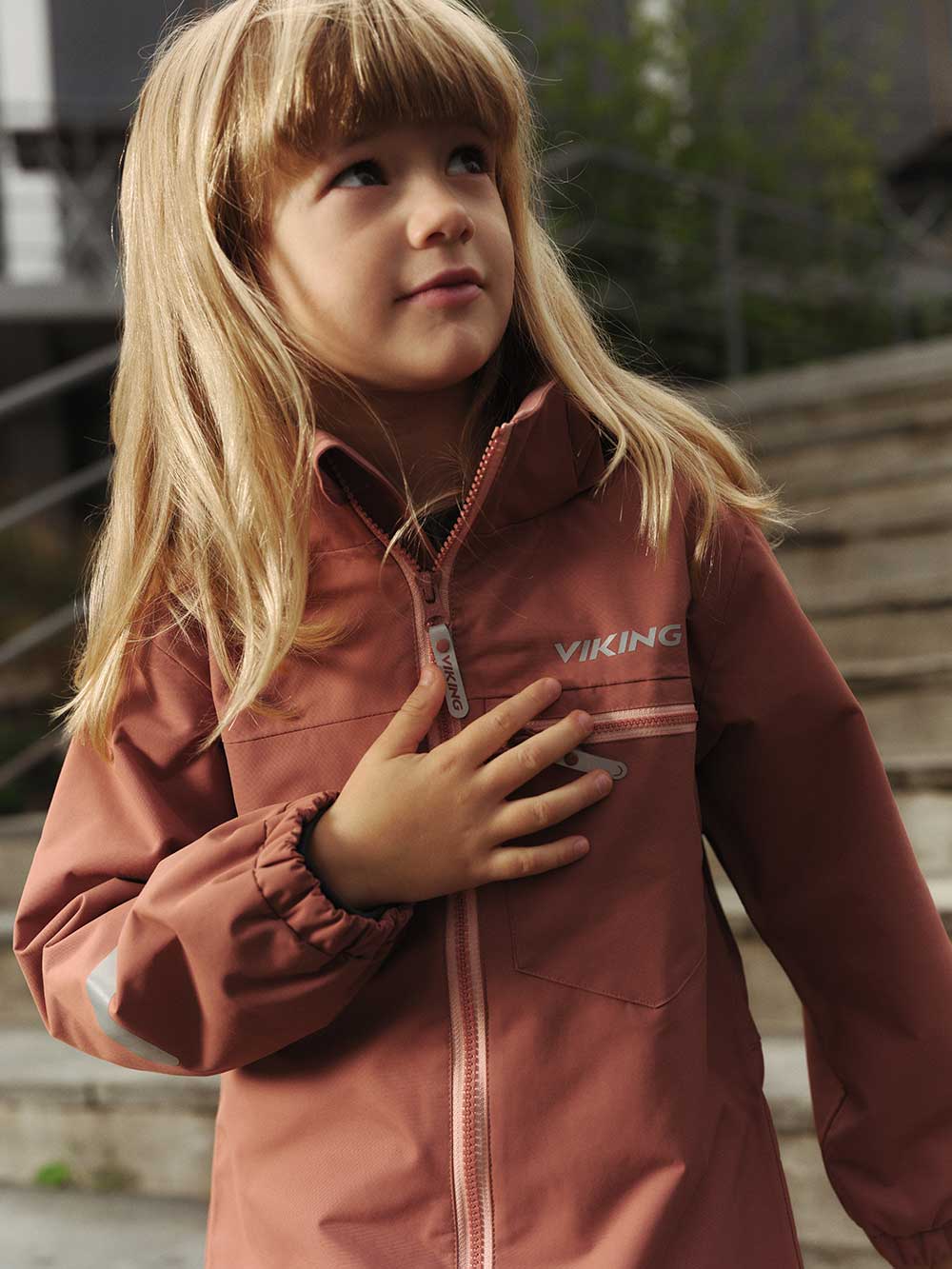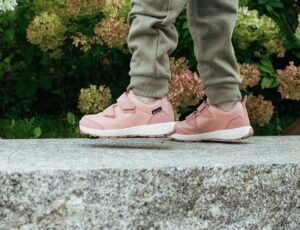
Camilla Mjelde, Compliance & Sustainability Director at Trimco Group, has spent more than 15 years in the fashion and textile industry. Driven by her vision for a fair clothing industry and fuelled by a passion for helping brands lead socially and environmentally responsible businesses, she is an industry expert and trusted advisor within supply chain responsibility. Here, Mjelde advises on what brands need to know about Digital Product Passports.
Laura Turner: What is Trimco Group and what does it do?
Camilla Mjelde: Trimco Group is a global supplier of label and packaging solutions for apparel, textiles and footwear. With over 40 years of experience, we pride ourselves on being the leader in sustainable innovation for label products and materials. Brands no longer need “just a label or packaging,” they need help with their traceability and transparency efforts. We saw that Trimco Group is uniquely positioned to cater for brands’ traceability needs by utilizing Care&Content data, RFID solutions, and GS1 GTIN with ProductDNA certificate management. TRIMCO is now the only combined label and packaging manufactured with a SaaS solution embedded in the total package.
LT: What is a Digital Product Passport?
CM: A Digital Product Passport (DPP) is one of the requirements in the Ecodesign for Sustainable Products Regulation (ESPR) introduced by the European Commission. It is a collection of product-related data conveyed through a unique identifier and is accessible via electronic means, for example, a QR code. The intention is to give access to information related to sustainability, circularity, value retention for reuse, remanufacturing, and recycling. We have fully committed ourselves to adding value to our customers with our Greentech traceability solution called ProductDNA. Trimco Group’s ProductDNA solution was born three years ago from our need to report on social and environmental compliance. As regulations intensified, it turned out to be a helpful tool for brands as well. ProductDNA is now a comprehensive solution that supports a brand’s DPP journey. Our Greentech solution aims to tailor itself to a brand’s needs. At this stage, there are no solutions that can handle every single aspect of the DPP. Brands are different, regulations are diverse and implemented differently globally, and platforms only cover small bits of the puzzle, leaving brands to manage everything on their own. Our aim with ProductDNA’s capabilities is to ensure a networking and collaboration system that can support brands in making these decisions much faster. We’ve shaped Trimco Group’s ProductDNA to collaborate with PLM and ERP solutions (such as Centric Software, Trimit or Delogue), PEF reporting tools (such as Green Score Capital) and downstream solutions such as Kezzler, to complete the circle together with the brand. We believe that it is everyone’s responsibility to create solutions and facilitate these options for an easier adoption of DPPs. We’re simply choosing to prioritise and actively work towards supporting brands in this endeavour.
LT: What are the goals of the DPP project?
CM: There are several objectives: To enhance sustainable production; extend product lifetimes, optimising product use and providing new business opportunities to economic actors through circular value retention and extraction; support consumers in making sustainable choices; enable the transition to the circular economy by boosting materials and energy efficiency; and to support authorities to verify compliance (European Commission). The data carrier for the Apparel DPP is envisioned to be printed or woven to a QR code label to cover the goal set to support consumers in making sustainable choices. However, to achieve goals in industrial-scale fibre-to-fibre sorting and recycling, we see the benefit of RFID technology as a data carrier. Trimco Group has just embarked on an early-stage pilot project with the American recycler and sorter, RECIRCLED. Together, we try to prove the time, cost and accuracy benefits of fibre-to-fibre recycling with RFID technology as a “DPP style” carrier version. It is important to mention the difference between upstream and downstream data when achieving circularity, the key goal for the ESPR, and what DPP is here to foster. Trimco Group is the designated upstream data collecting partner for brands – the traceability and transparency workload is huge. Trimco Group offloads this workload for brands in ProductDNA’s certificate manager module. We take this to a whole new level with our API connection with the WORLDY and AMFORI Platforms. Next, we consider networking and partnerships for data sharing as key to a circular economy. So, we are proud of our Product Lifecycle Management (PLM) and Enterprise Resource Planning (ERP) data sharing partnership. Downstream strategies for a product’s life post-purchase are the other half of the circular plan. The DPP must empower the consumer and the economic actors with access to resell, repair, authentic chemical compliance, and final fibre-to-fibre recycling. DPPs must be sent via API to the EU Commission central registry. In addition, brands must ensure that duplication of these DPPs is hosted outside of the brand’s realm, as the DPPs must still exist even if a brand falters. Trimco Group has partnered with DPP SaaS provider Oslo-based Kezzler, which supports brands with their total downstream solution package.
LT: When do brands need to start thinking about DPPs?
CM: As the implementation of a DPP will be mandatory for all textiles sold in the EU by 2027-2028 as part of the EU Strategy for Sustainable and Circular Textiles, there is no better time than now for brands to start making their first steps. Understandably, many brands avoid making the first step. DPP requires significant changes in production and data management processes for brands and manufacturers. It requires collaboration among various stakeholders in the industry and it involves overcoming technical and logistical challenges in implementation. A solid collaboration at this point is crucial. Mapping how you want your DPP journey to unfold and preparing for the data carrier of choice – these are things that take time. Whether it is a QR code or embedded RFID labels with QR codes for extended functionality, it is important to lay out a solid foundation for a successful result.
LT: What do DPPs mean for consumers?
CM: The addition of a DPP significantly enhances transparency across the entire textile supply chain, empowering consumers to make informed, sustainable choices. This is particularly crucial in the childrenswear industry, where parents are typically more invested in their children’s wellbeing. Nonetheless, we don’t see many children’s brands really adventuring into a DPP journey.

Viking
LT: Which childrenswear brands have you worked with?
CM: Viking, a leader in Norwegian outdoor footwear and apparel, has partnered with Kezzler and Trimco Group to embark on its DPP journey. The collaboration is set to launch with selected styles from Viking’s s/s 25 collection, embedding transparency, traceability, and customer engagement at the heart of the product lifecycle. In preparation for the European Union’s DPP requirements, Viking is taking a proactive approach. Rather than viewing DPP as a regulatory challenge, Viking sees it as an opportunity to enhance data quality across the value chain, explore new customer engagement avenues, and drive sustainability practices. We’ve had the pleasure of acting as the label and trims supplier for the childrenswear brand Frugi on its circular collection, for which it received the Draper’s Sustainable Fashion Award in the Best Circularity Initiative category in 2024. While that wasn’t a DPP project, it was still a fantastic assignment supporting sustainable practices. We also helped the Norwegian brand Bergans of Norway with a repair programme for children’s winter coveralls. But, in general, we’ve seen less traction from childrenswear brands on the adoption of DPP projects.
LT: How can brands learn more about Trimco Group?
CM: Our website and the articles we publish are a great source of information. Subscribing to our newsletter, attending our webinars, or following our updates on LinkedIn are all good ways to stay up to date too.







